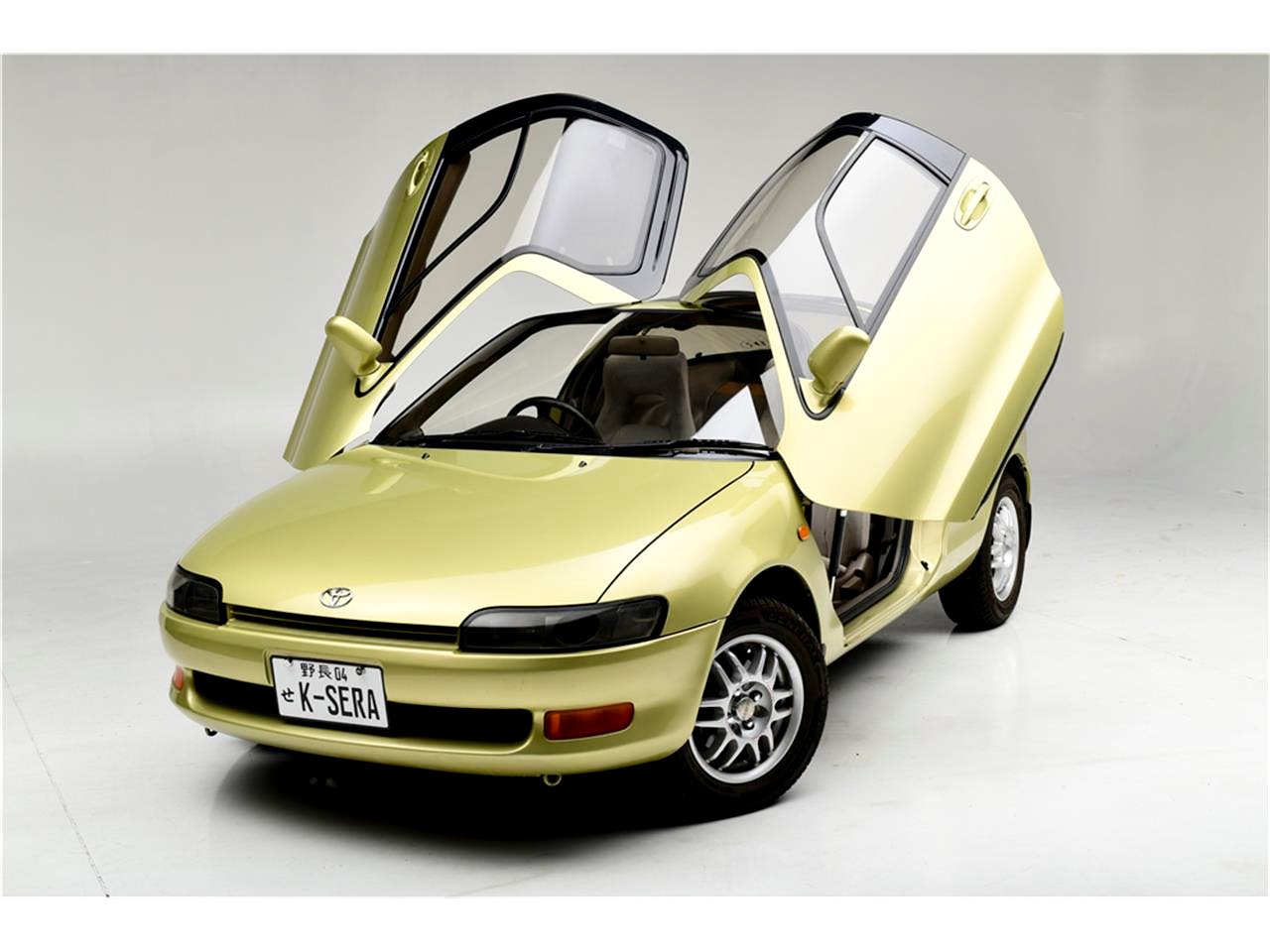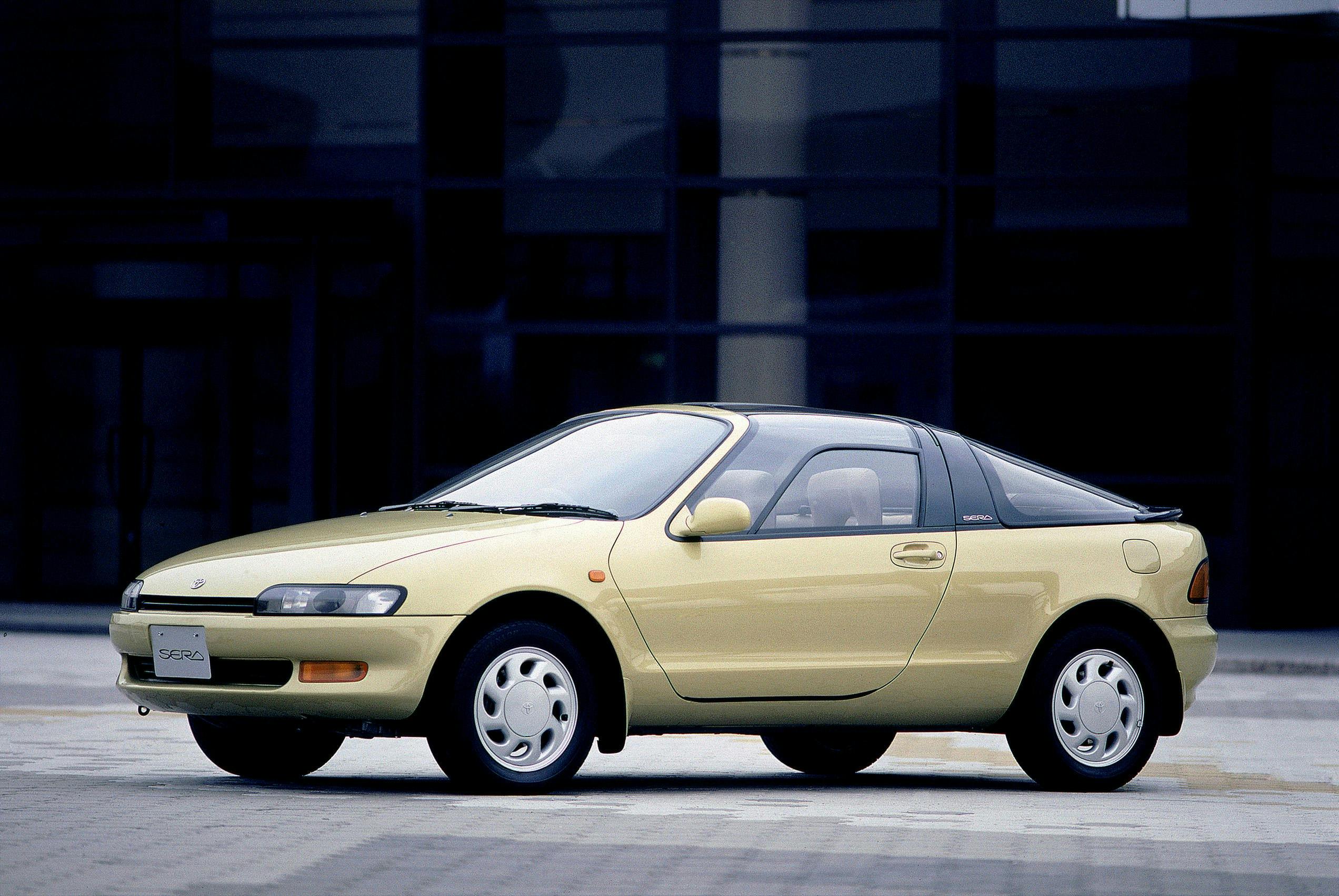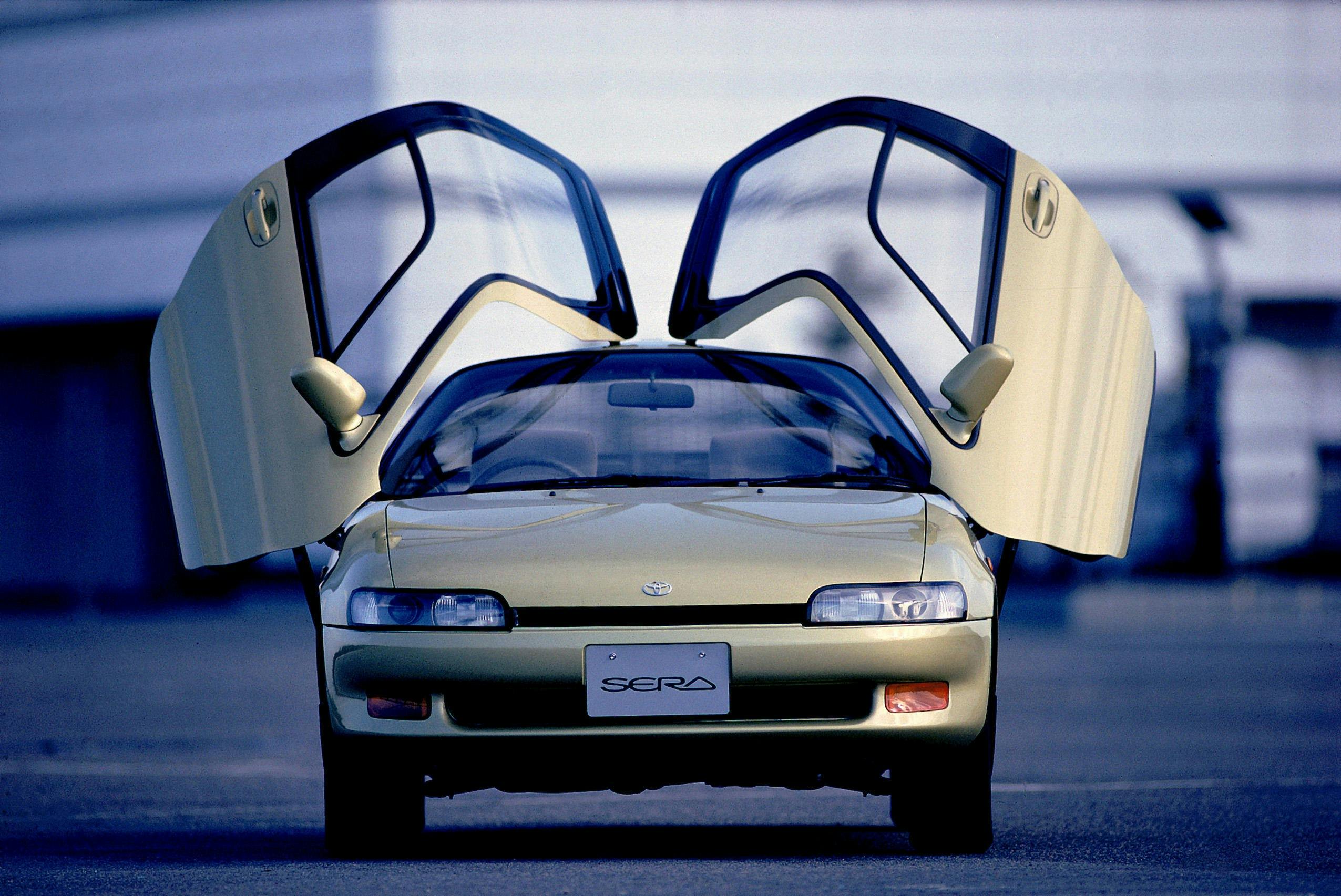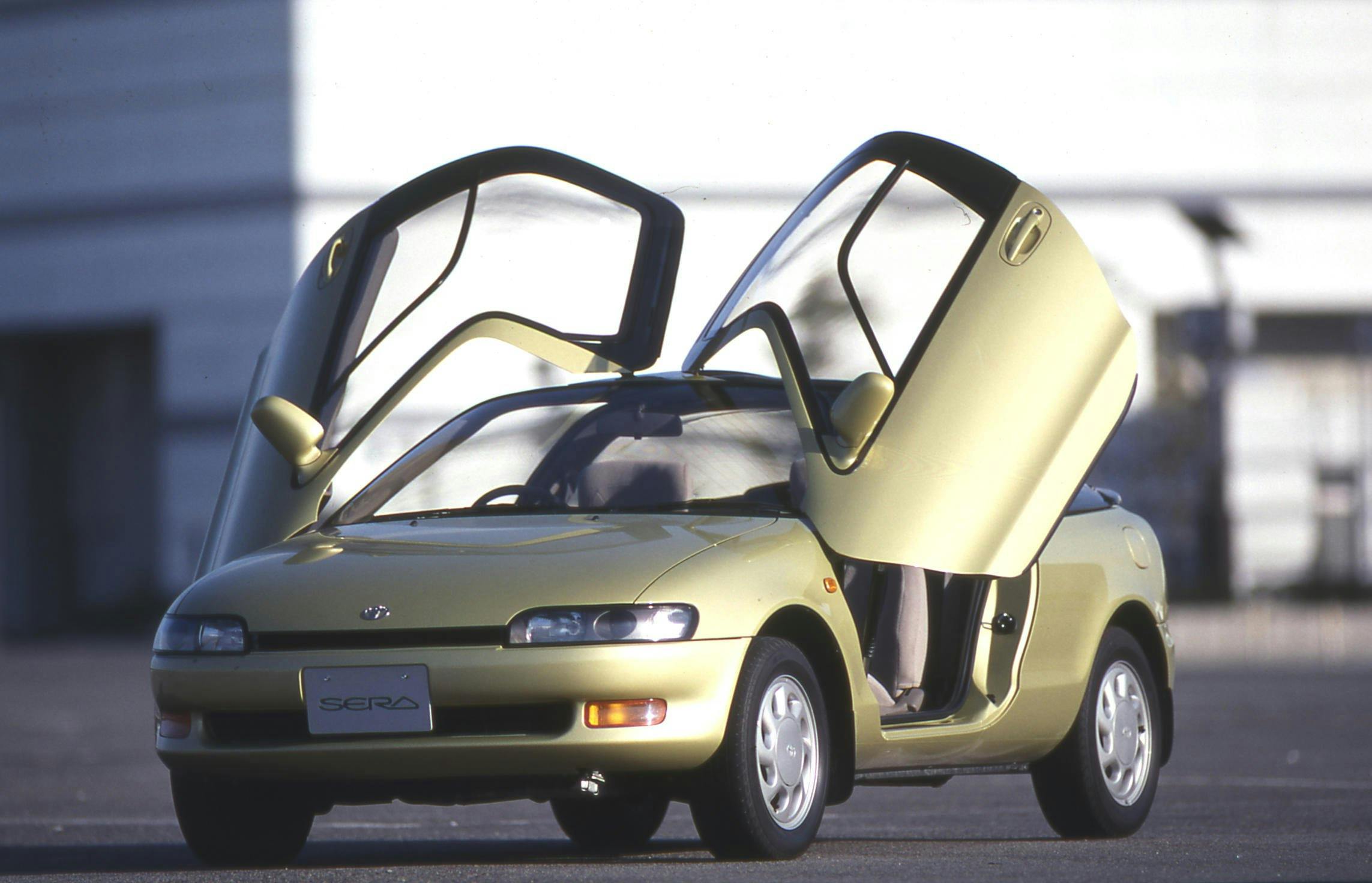
Odd Rides: 1990 Toyota Sera
In the midst of Japan's automotive boom in the late 1980s, Toyota set its sights on redefining the future of commuting in style. Dissatisfied with the conservative designs and diminutive 660-cc engines of the era's popular Kei cars, Toyota unleashed its creativity, bringing the AXV-II prototype with butterfly doors to life. The result? The birth of the uniquely futuristic Toyota Sera in 1990.
Designing the Future Commuter
Crafted from components of Toyota's Paseo, Tercel, and the elusive Starlet, the Sera emerged as an ultra-sleek, unibody, glass-canopied, twin-cam, two-door vehicle. It defied categorization as a sports car, positioning itself as a lifestyle car—an embodiment of eccentricity for futuristic commuters. The name "Sera" was carefully chosen, representing the future tense of the French word "etre" (to be), symbolizing a dream-like vehicle propelling us forward. Beyond its avant-garde marketing, the Sera boasted remarkable features.
Toyota U.K. Magazine highlighted the Sera's groundbreaking 10-speaker Super Live Sound System, rumored to have inspired the McLaren F1's dihedral door geometry. Despite its unique appearance, panoramic-view cockpit, impressive fuel economy, and a reasonable $11,000 price tag (equivalent to about $24,000 in 2022), the Sera remained a low-volume car, never officially making its way to North America.
The Rarity Factor
Approximately 16,000 Seras were produced between 1990 and 1996 across three phases. While Phase I constituted about 75% of production, Phase II and III brought aesthetic updates and modernizations, making some variants even rarer depending on the drivetrain.
Performance and Quirks
The Sera's performance was a blend of sensibly sporty and unconventional. Equipped with either an A242 four-speed automatic or a C155 five-speed manual transmission, the Sera exhibited agility rather than outright speed. Its compact size, 110 hp per ton, and balanced weight distribution provided a zippy and responsive driving experience, especially on winding roads.
Why No Love in the U.S.?
Despite its potential appeal, the Toyota Sera never officially arrived in the U.S. Car and Driver, in 1990, questioned Toyota's decision, suggesting that crash standards and structural engineering concerns were cited as reasons for its exclusion. However, the magazine remained unconvinced, pointing out parallels with existing popular models and suggesting that the Sera could seamlessly fit into the American market.
Enthusiasts' Dilemma
While the Toyota Sera might be a rare gem in automotive history, enthusiasts ponder the possibility of a comeback for this eco-friendly, sporty coupe in today's culture. However, the scarcity of remaining models poses a challenge in showcasing its distinctive charm.
In a world dominated by conventional automobiles, the Toyota Sera stands out as a testament to innovative design, pushing the boundaries of what a commuter vehicle can be. Although its presence on U.S. roads remains a dream for many, the Sera's legacy endures as a symbol of an era when automotive futurism knew no bounds.











